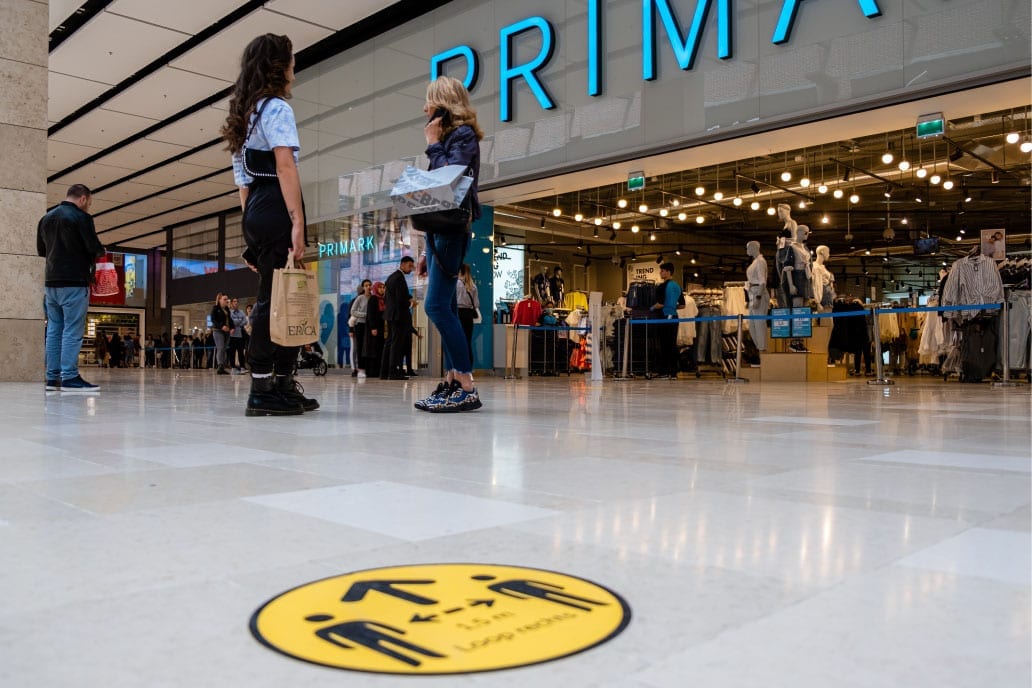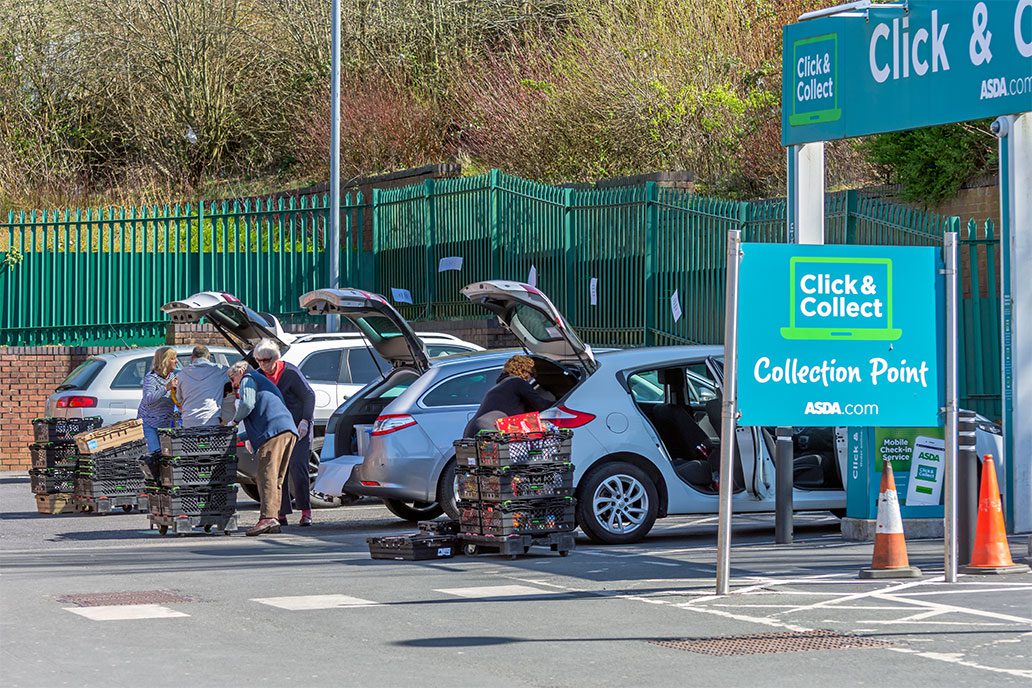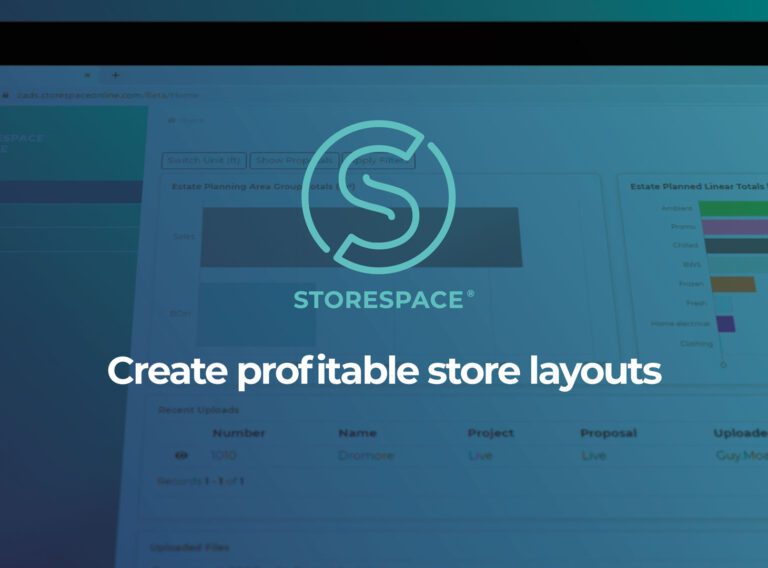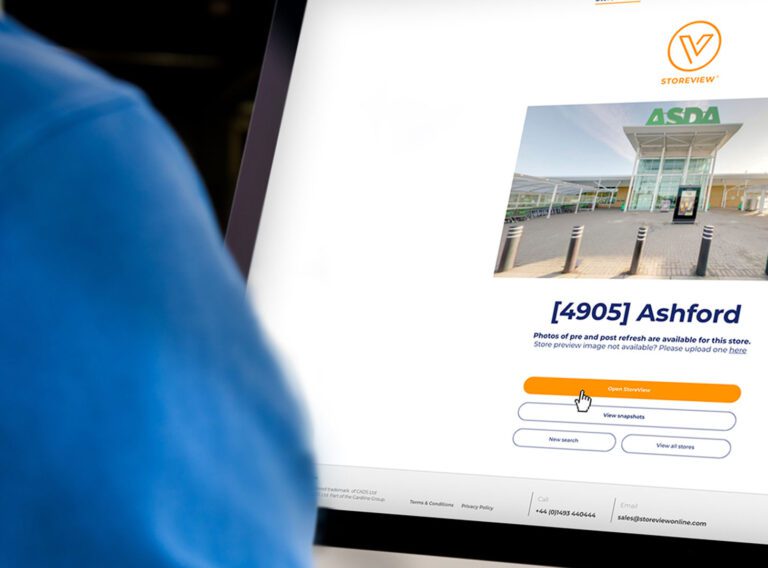Optimise store layout with our StoreSpace® retail space planning software
StoreSpace® is the intuitive AutoCAD-based retail space planning software that will enable you to improve the profitability of your stores.
Retail Planning Software
In the face of the global pandemic, retail has been hard hit by shop closures and reduced demand, but how will retailers make physical stores work post Coronavirus?
Supermarkets across the UK have rapidly reacted and implemented preventative measures such as clearly marked entrance and exit ways, limiting numbers of customers in store, one-way systems, social distance markers, contactless payments, safety screens, technology changes on self-scan areas and hand sanitizer stations. Now that non-essential retailers are opening, they are likely to follow suit.

No one knows what consumers will do now that non-essential retailers are open. Most anecdotal evidence points to initially lower footfall as customers seek to avoid crowds and protect themselves, especially the most vulnerable. The Office of National Statistics (ONS) have released data demonstrating how over 60s are at significant risk of dying from COVID-19. Therefore, retailers with an older customer base are unlikely to see many of their customers initially.
O2 and EE have virtual queues where customers are given a time to return to collect and pay for purchases. NHS and care workers are being given priority by showing ID they can skip the queue. This means customers will spend less time browsing in store, leading to a loss of impulse purchases, particularly as point-of-purchase merchandise is likely to be removed to reduce risk of contamination. Retailers will need to find innovative ways to prompt impulse purchases and we look forward to seeing some creative ideas emerging.
In a statement, Primark has informed customers of what to expect today. “Social distancing protocols, hand sanitiser stations, Perspex screens and additional cleaning of high-frequency touchpoints”.
Other initiatives taking place are drive-through click and collect services at Currys PC World stores and virtual shopping appointments. Dunelm is trialling a virtual shopping experience where customers have a video call with a member of staff who shows them the latest products, designs, and trends in store. Once the shopping trip is completed, items can be ordered for Click & Collect from a local store. Virtual shopping trips like this may become the new normal, particularly if AI can be used to create an enjoyable shopping experience.
According to RTIH, sports and leisure retailer ‘Decathlon is rolling out mobile self-checkout across 81 German stores. Customers can scan and pay for items using their smartphone, automatically disabling the security tag. This reduces touchpoints which will in-hand reduce the chance of infection.
Retail Gazette has said ‘an additional £14 million has been made available to the Health & Safety Executive to support businesses in making workplaces safe.’ This funding is likely to go towards protective screens and PPE for workers.

According to the ONS, volume of goods sold in April fell by 18.1% and sales of clothes halved. However, a survey conducted by Bazaarvoice showed 41% of respondents were currently shopping online for things they would normally shop for in-store. This is likely to do with lack of availability of products in stores, either due to high demand or store closures.
There has been much concern for the survival of small retailers during the lockdown period, however Rob Hattrell, vice-president of eBay UK, said the company had signed up more than 50,000 new small businesses since February – twice the volume it would normally expect.
This demonstrates a new way of working where smaller retailers are capitalising on online-selling platforms to save on the cost of a physical store which is likely to lead to many empty small retail spaces on the high street. Concerningly, some research suggests that if consumer uptake of ecommerce increases by ten percentage points, it would make many physical stores unprofitable.
However now stores are able to reopen, the design and function of retail spaces is more important than ever to try recapture some of the lost revenue. Store chains that previously haven’t outsourced retail planning may consider using a retail planning company such as ourselves to ensure strict health and safety measures whilst optimising sales.

Coronavirus poses a major issue for the fashion industry, not only because there’s a lack of social interaction which has decimated demand for new outfits but also the UK government has recommended fitting rooms remain shut, which is likely to increase returns. These may be difficult to handle, ensuring goods are decontaminated or quarantined, as necessary.
According to the ONS, the fall in non-food sales in April resulted in the lowest levels of clothing and shoe sales since they started collecting data.
By implementing StoreSpace® integrated with NielsenIQ planograms, Dominican Republic grocery retailer achieves productivity gains by optimising its retail planning process
Read case studyThe Government recommendations for returns are strict. Any item that has been returned should be stored in a container or separate room for 72 hours or if possible, cleaned with usual cleaning products before displaying on the shop floor again. These guidelines may result in fewer sales because the turnaround of returns will be much slower if proper cleaning cannot be completed (e.g. clothing). This could be particularly disruptive if returns are increased due to the absence of fitting rooms.
It is not known when fitting rooms may reopen, but according to a survey of 1,017 Brits by EY, 80% of people surveyed would be uncomfortable trying on clothes in a store due to the Coronavirus pandemic. The research also revealed that 64% said they expect to shop less frequently and 57% will give more consideration to hygiene and sanitation. Worryingly, 67% expect it to take months or even years before they will return to a restaurant, with similar results for cinemas (80%) and bars/pubs (73%).
Smaller, local business may encounter issues with social distanced queues outside their shop due to narrow high streets and tightly packed shops. In peak times, queues may extend past one shop and in front of another, disturbing that queueing system. This may create a need for collaboration with surrounding businesses and local authorities to ensure customer safety at all times, avoiding overcrowding. Opening times could be staggered to avoid a morning rush and reduce the impact on public transport.
‘Retail will never, ever be the same again’ said Theo Paphitis, owner of Boux Avenue and Ryman Stationary, in a recent interview with the BBC ‘The longer we’re in lockdown, the longer people have the opportunity to change their shopping habits and they have adopted digital retail by the masses.’
CADS Director, Guy Moates, agrees:
“Without doubt retail will be changed in some ways. Areas of the high street were already struggling before we entered lockdown and there will almost certainly be casualties as we emerge from this period depending on how footfall bounces back. Many shopping trips are combined with a meal or coffee and until the F&B sector is also fully opened again, I do not see anything returning to ‘normal’ soon. But we hope there is pent-up demand resulting in a strong Q3 leading to a buoyant and crucial festive season. Resulting in retailers recouping some of the missing takings from the last three months as customers return to the high street and shopping centres in as near to normal numbers as possible.”
The next few weeks will reveal the winners and losers in the battle to entice customers back into store. Without doubt those retailers that truly understand their customers’ concerns and creatively develop an enjoyable experience while keeping all involved safe will see their profits return. We wish them all luck.

StoreSpace® is the intuitive AutoCAD-based retail space planning software that will enable you to improve the profitability of your stores.
Retail Planning Software
An interactive communication tool that brings store changes to life and removes the need for project teams to travel to store.
Virtual Store Tours